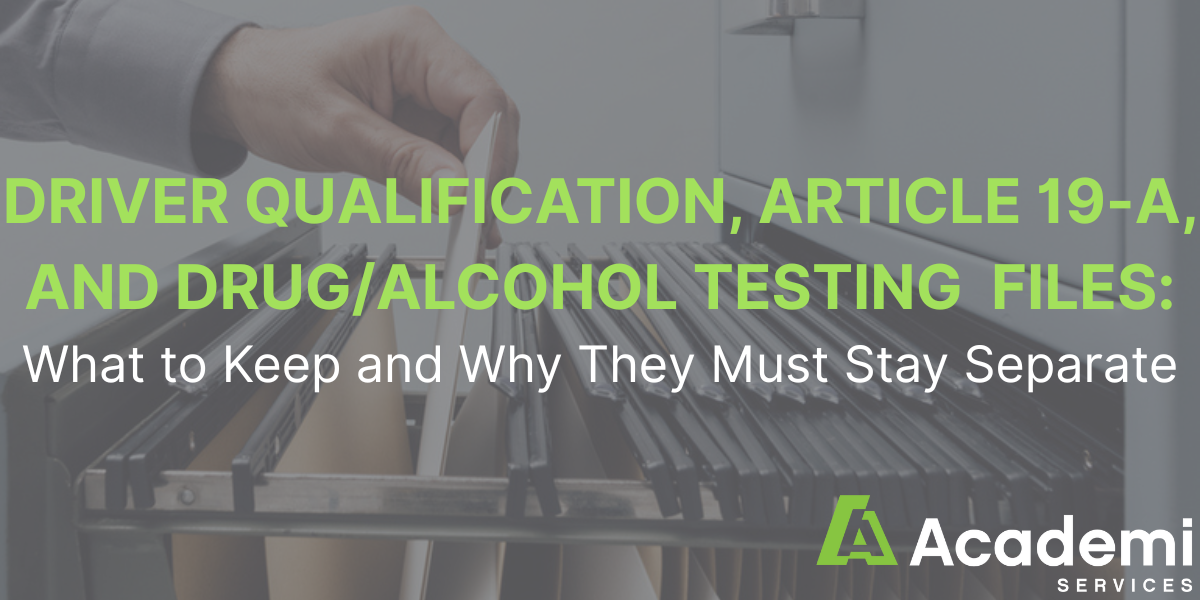
Are Your Driver Files Audit-Ready? What to Know About Driver Qualification Files, Article 19-A Files, and Drug and Alcohol Testing Files
For transportation companies based in New York, managing compliance records for regulated drivers is an easily overlooked responsibility. Safety managers must maintain different distinct files, each with its own set of requirements and regulatory purpose. Depending on the type of carrier, a company may be required to create and maintain a Driver Qualification File, an Article 19-A Driver File, and a Drug and Alcohol Testing File for each driver.
While these files serve different regulatory bodies and compliance needs, they are often confused or combined improperly. This can lead to violations, failed audits, and legal exposure in the event of a crash. This article will clarify the purpose and required content of each type of file and best practices for managing them.
Driver Qualification File
The Driver Qualification File is required under Title 49 Part 391 of the United States Code. Its purpose is to ensure that each commercial driver is properly vetted and qualified to operate a commercial motor vehicle safely.
Required Documents:
Why It Matters:
The DQF demonstrates that the company has verified the driver’s ability to safely operate a CMV. While these files are routinely audited by the FMCSA and are frequently reviewed during post-crash investigations. Incomplete or inaccurate DQ files are among the most common violations uncovered during audits.
Drug and Alcohol Testing File
Separate from the Driver Qualification File, the Drug and Alcohol Testing File is mandated under Title 49 Parts 40 and 382 of the United States Code. It supports a company’s responsibility to maintain a drug-free workplace and demonstrate compliance with the federal drug and alcohol testing regulations.
Required Documents:
Why It Matters:
This file proves that your company is actively managing a compliant testing program. It is important to note that drug and alcohol testing records are subject to strict privacy protections. Only those involved in managing the testing program should have access to this file. For this reason, these records should be stored separately from the DQF and any general personnel files.
Article19-A Driver File
Applicable to passenger carriers in New York, the Article 19-A Driver File is required under Article 19-A of the New York Vehicle and Traffic Law. It ensures that drivers meet state-mandated qualifications and are monitored on an ongoing basis.
Required Documents:
Why It Matters:
The 19-A File is designed to protect the public by ensuring that only properly qualified and monitored drivers operate buses in New York. These files are regularly reviewed during state audits and are often used in legal proceedings following bus-related accidents. Keeping this file complete and up to date is essential to maintaining your operation’s compliance and credibility.
Best Practices for Managing Compliance Files
Final Thoughts
Compliance in the transportation industry is not just about avoiding fines. It is about protecting lives, defending your company’s reputation, and building a culture of safety. Managing your Driver Qualification Files, Drug and Alcohol Testing Files, and Article 19-A Files properly is a foundational part of doing that.
If you need help organizing, auditing or managing your compliance records, consider partnering with Academi Services which understands both federal and New York-specific requirements.